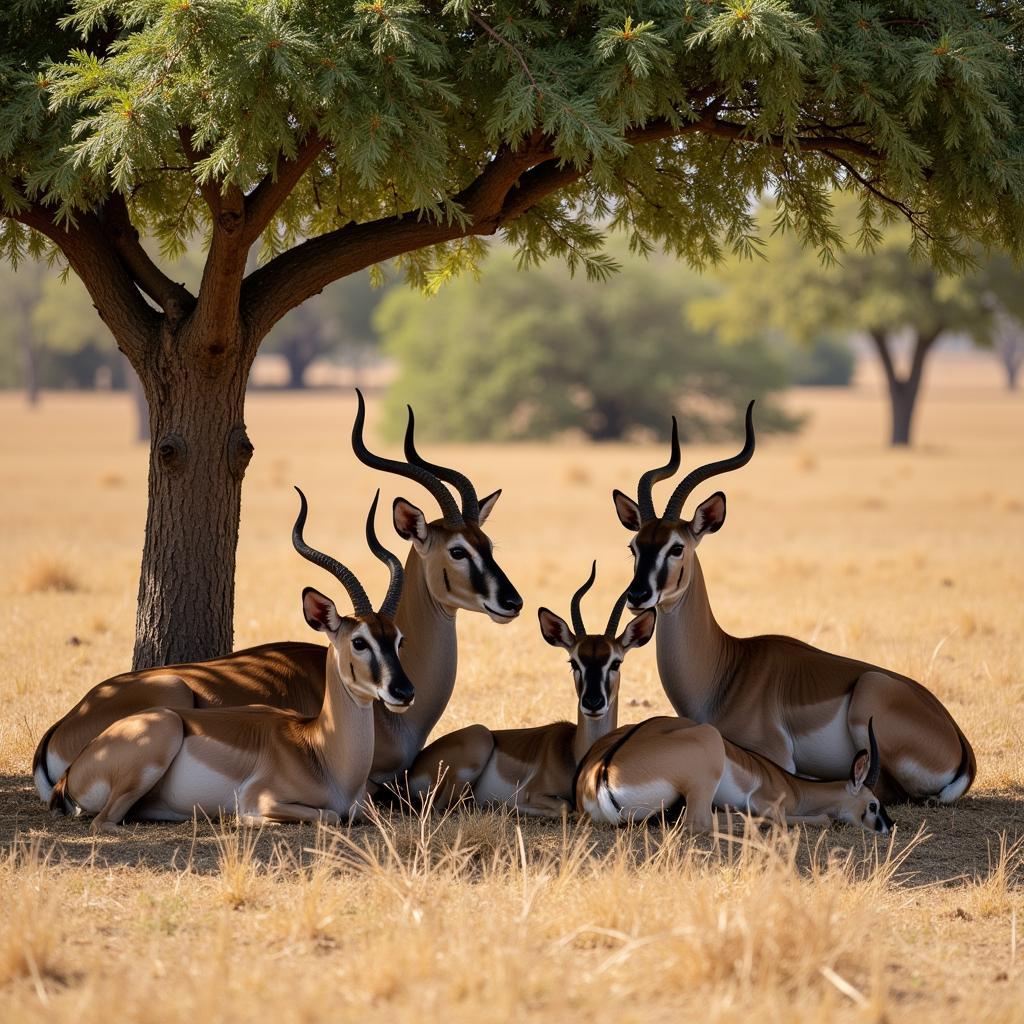Unveiling the Majesty of the African Kudu
The African Kudu, a majestic spiral-horned antelope, roams the savannas and woodlands of eastern and southern Africa. These striking creatures, with their distinctive markings and regal bearing, hold a special place in the continent’s rich tapestry of wildlife. Let’s delve into the captivating world of the African kudu, exploring its unique characteristics, habitat, and the challenges it faces in the modern world.
The Grandeur of the Greater Kudu
The greater kudu is one of the two kudu species, the other being the lesser kudu. Standing tall with a shoulder height of up to 1.6 meters, the greater kudu commands attention. Males are significantly larger than females and possess impressive spiraled horns that can reach lengths exceeding 1.8 meters. These magnificent horns, with their characteristic two-and-a-half twists, are a symbol of power and beauty in many African cultures. The kudu’s coat is a tawny brown or grayish-blue, adorned with vertical white stripes that provide excellent camouflage in the dappled shade of the woodland.
 Male African Kudu Displaying Horns
Male African Kudu Displaying Horns
The lesser kudu, while smaller in stature, shares the same captivating spiral-horned beauty. These elegant creatures are more adapted to denser bush and thicket habitats. Their coats exhibit more pronounced white stripes and smaller, tighter spirals on their horns.
Understanding the Kudu’s Habitat and Lifestyle
African kudus are primarily browsers, feeding on leaves, fruits, flowers, and other vegetation. They are highly adaptable, thriving in a variety of habitats, from open woodlands and savannas to dense thickets and mountainous regions. Their ability to browse on a diverse range of plants allows them to survive in areas where other herbivores might struggle. However, this also makes them vulnerable to changes in their environment, such as habitat loss and degradation.
 Female African Kudu Grazing in Savanna
Female African Kudu Grazing in Savanna
Kudus are social animals, forming small herds consisting of females and their offspring. Mature males often live solitary lives or in small bachelor groups. The african kudu antelope exhibits a unique social dynamic, especially during the breeding season.
“The social structure of the kudu is complex and fascinating, reflecting their adaptability and resilience in the African landscape,” notes Dr. Anika Moloi, a wildlife biologist specializing in African ungulates.
Threats and Conservation Efforts
Sadly, the African kudu faces increasing pressure from human activities, including habitat loss due to agriculture and urbanization, as well as poaching for their meat and horns. Conservation efforts are crucial to ensure the long-term survival of this magnificent species. These efforts include habitat protection, anti-poaching patrols, and community-based conservation initiatives that involve local communities in the protection of these animals.
 African Kudu Family Resting in Shade
African Kudu Family Resting in Shade
The african kudu tribe connection further exemplifies the cultural significance of the kudu.
The African Kudu: A Symbol of Africa’s Wild Beauty
The African kudu, with its majestic horns and graceful movements, embodies the spirit of the African wilderness. From the african kudu hunt traditions to its crucial role in the ecosystem, the kudu holds a special place in the hearts of many. By understanding the challenges these animals face and supporting conservation efforts, we can help ensure that future generations continue to marvel at the majesty of the African kudu. The african deer with curly horns and the african deer greater kudu highlight its unique features.
Conclusion
The African kudu, a symbol of grace and resilience, faces ongoing challenges in a changing world. By understanding their unique characteristics and supporting conservation efforts, we can contribute to the preservation of these magnificent creatures and their crucial role in the African ecosystem.
FAQ
- What is the average lifespan of an African kudu?
- What are the primary predators of the African kudu?
- What is the significance of the kudu’s horns in African culture?
- How do kudus adapt to their environment?
- What are the main threats facing the African kudu population?
- How can I support kudu conservation efforts?
- What is the difference between the greater and lesser kudu?
For further information, you can explore other articles on our website related to African wildlife and conservation.
When you need assistance, please contact us: Phone: +255768904061, Email: [email protected] Or visit our address: Mbarali DC Mawindi, Kangaga, Tanzania. We have a 24/7 customer service team.
